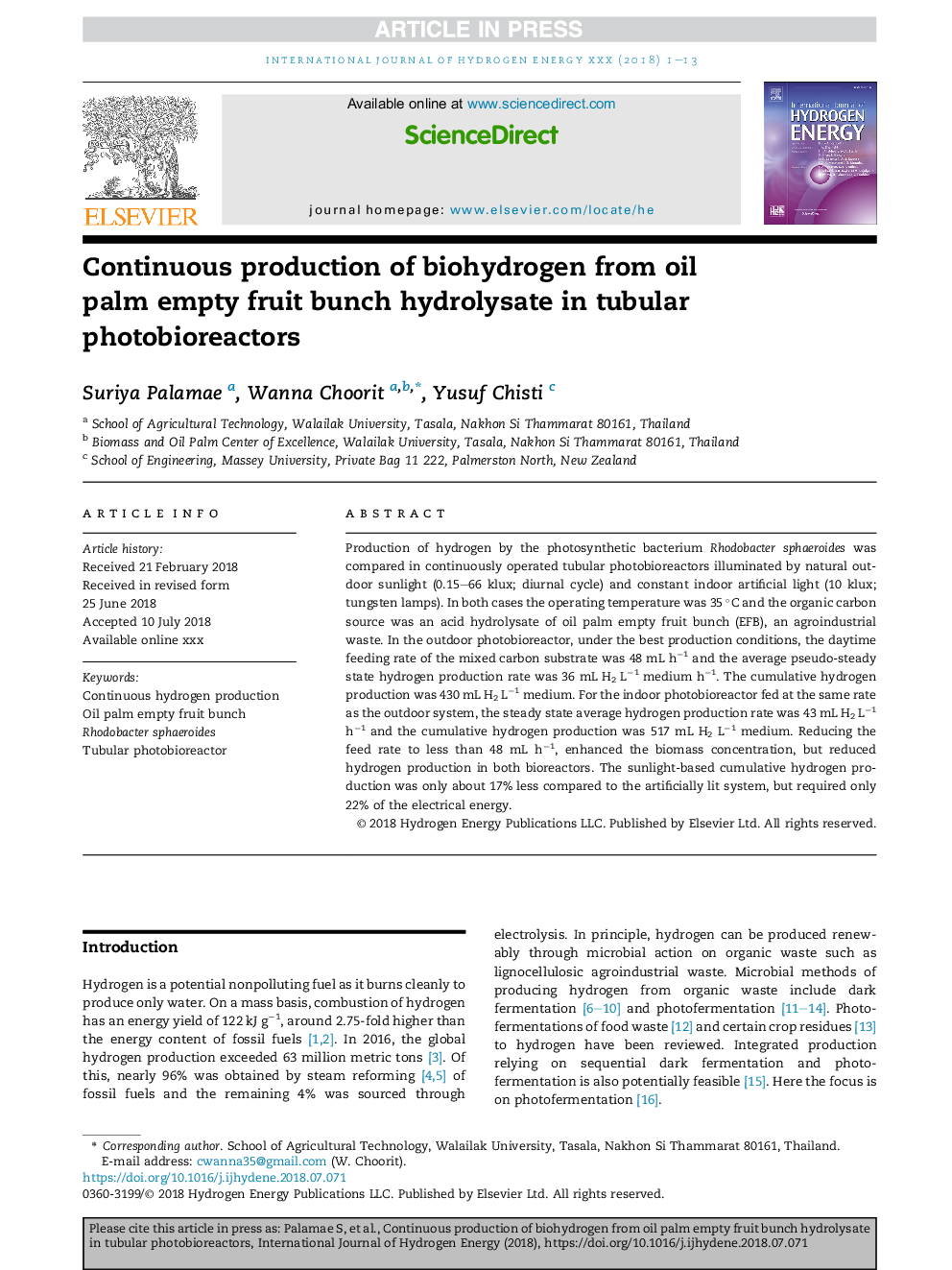| Article ID | Journal | Published Year | Pages | File Type |
|---|---|---|---|---|
| 8942810 | International Journal of Hydrogen Energy | 2018 | 13 Pages |
Abstract
Production of hydrogen by the photosynthetic bacterium Rhodobacter sphaeroides was compared in continuously operated tubular photobioreactors illuminated by natural outdoor sunlight (0.15-66 klux; diurnal cycle) and constant indoor artificial light (10 klux; tungsten lamps). In both cases the operating temperature was 35 °C and the organic carbon source was an acid hydrolysate of oil palm empty fruit bunch (EFB), an agroindustrial waste. In the outdoor photobioreactor, under the best production conditions, the daytime feeding rate of the mixed carbon substrate was 48 mL hâ1 and the average pseudo-steady state hydrogen production rate was 36 mL H2 Lâ1 medium hâ1. The cumulative hydrogen production was 430 mL H2 Lâ1 medium. For the indoor photobioreactor fed at the same rate as the outdoor system, the steady state average hydrogen production rate was 43 mL H2 Lâ1 hâ1 and the cumulative hydrogen production was 517 mL H2 Lâ1 medium. Reducing the feed rate to less than 48 mL hâ1, enhanced the biomass concentration, but reduced hydrogen production in both bioreactors. The sunlight-based cumulative hydrogen production was only about 17% less compared to the artificially lit system, but required only 22% of the electrical energy.
Keywords
Related Topics
Physical Sciences and Engineering
Chemistry
Electrochemistry
Authors
Suriya Palamae, Wanna Choorit, Yusuf Chisti,
